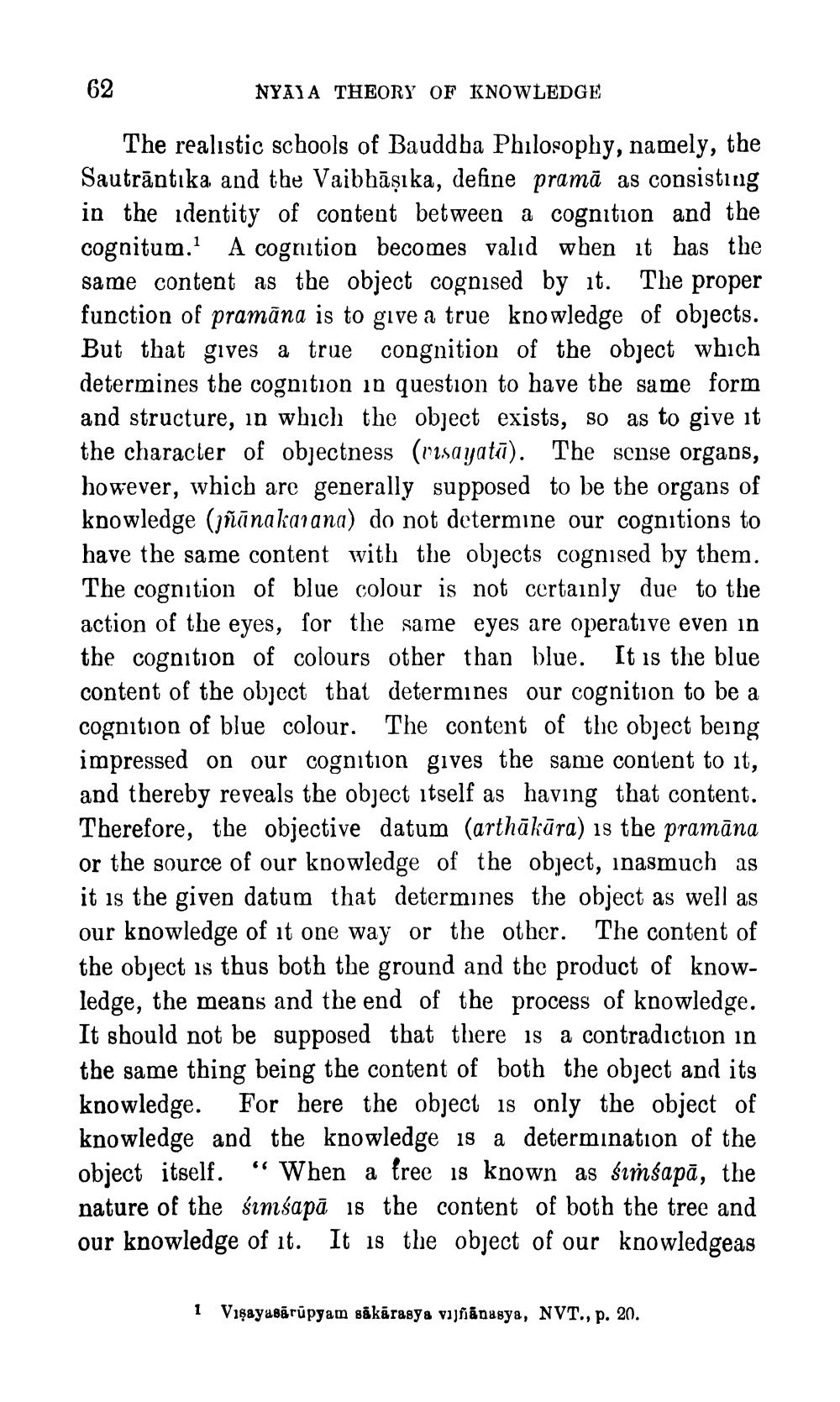________________
62
NYAIA THEORY OF KNOWLEDGE
The realistic schools of Bauddha Philosophy, namely, the Sautrāntika and the Vaibhāṣika, define prama as consisting in the identity of content between a cognition and the cognitum. A cognition becomes valid when it has the same content as the object cognised by it. The proper function of pramāna is to give a true knowledge of objects. But that gives a true congnition of the object which determines the cognition in question to have the same form and structure, in which the object exists, so as to give it the character of objectness (sayata). The sense organs, however, which are generally supposed to be the organs of knowledge (jñānakarana) do not determine our cognitions to have the same content with the objects cognised by them. The cognition of blue colour is not certainly due to the action of the eyes, for the same eyes are operative even in the cognition of colours other than blue. It is the blue content of the object that determines our cognition to be a cognition of blue colour. The content of the object being impressed on our cognition gives the same content to it, and thereby reveals the object itself as having that content. Therefore, the objective datum (arthākāra) is the pramāna or the source of our knowledge of the object, inasmuch as it is the given datum that determines the object as well as our knowledge of it one way or the other. The content of the object is thus both the ground and the product of knowledge, the means and the end of the process of knowledge. It should not be supposed that there is a contradiction in the same thing being the content of both the object and its knowledge. For here the object is only the object of knowledge and the knowledge is a determination of the object itself. When a free is known as simsapa, the nature of the simsapa is the content of both the tree and our knowledge of it. It is the object of our knowledgeas
"6
1 Visayasarūpyam sakārasya vijñanasya, NVT., p. 20.




